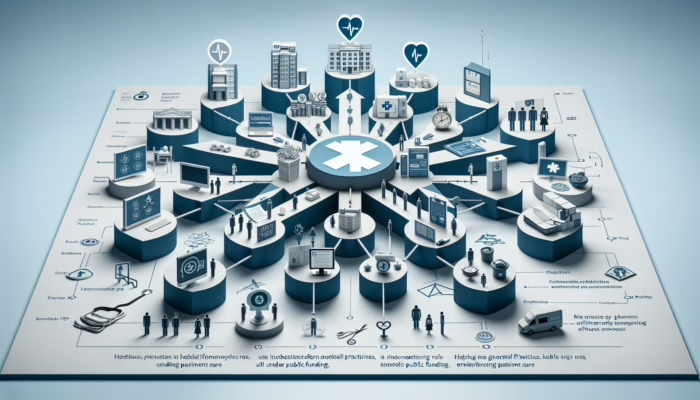Identifying the Principal Causes of Hearing Loss Among Construction Workers
The Profound Effects of Noise Exposure on Auditory Health

Extended exposure to loud machinery and tools poses a considerable risk in the construction industry, contributing to a substantial percentage of hearing loss among construction workers. Construction sites are typically inundated with sounds from heavy machinery such as excavators, bulldozers, and concrete mixers, which can generate noise levels that frequently exceed 100 decibels. Continuous exposure to such noise creates a high probability of irreversible auditory damage. Research suggests that even short bursts of exposure to extremely loud sounds can exacerbate this risk, leading to a condition known as acoustic trauma, which can severely compromise one’s ability to hear effectively.
Significantly, the risk of hearing loss extends beyond just the more powerful machinery. Common tools like nail guns, pneumatic drills, and saws can also generate harmful noise levels that contribute to gradual hearing impairment. Numerous workers tend to underestimate the noise produced by these everyday tools, mistakenly assuming their effects are minimal. The construction sector is notorious for the inconsistent usage of hearing protection, and regulations surrounding mandatory protective gear can vary widely across different regions. Therefore, it is imperative for workers to take personal accountability for their hearing health by utilising the protection available to them.
Preventing hearing loss necessitates a heightened understanding of its associated dangers. Many workers may not fully comprehend the risks until they are faced with irreversible damage. Employers can significantly mitigate these threats by implementing noise monitoring systems and initiating all-encompassing training programmes aimed at fostering a culture of safety. Regular reminders about the necessity of utilising ear protection in high-noise work environments can help shift safety norms on-site, ultimately safeguarding workers’ auditory health.
The Influence of Age and Genetic Factors on Hearing Loss
Age-related hearing loss, commonly referred to as presbycusis, represents a natural part of the ageing process that affects individuals globally. As people reach their 50s and 60s, the cumulative impacts of noise exposure may become particularly pronounced, especially for those who have devoted significant time working in loud settings such as construction sites. Additionally, genetic elements play a critical role; certain hereditary conditions can predispose individuals to experience early-onset hearing loss. Workers may find that a familial history of hearing impairment heightens their vulnerability, underscoring the necessity of regular auditory examinations.
Moreover, ongoing studies into age-related hearing loss indicate that construction workers face compounded effects when also exposed to high noise levels. The interplay between genetic predispositions and environmental noise exposure emphasizes the need for proactive measures regarding auditory health. For those in the construction industry, maintaining awareness of personal and family health histories can guide necessary precautions, such as committing to regular hearing evaluations.
With the global population aging, awareness campaigns focusing on the specific needs of older construction workers are becoming increasingly vital. Many countries are beginning to direct attention towards these demographics by providing tailored educational resources and hearing protection initiatives aimed at reducing the risk of hearing impairment.
Assessing the Risks Associated with Chemical Exposure
Chemical exposures encountered within the construction sector can be insidious, contributing not only to various health complications but also to hearing loss when combined with noise exposure. Substances such as solvents, heavy metals, and specific types of construction adhesives can adversely affect the functionality of the inner ear. Prolonged contact with chemicals like toluene and lead can induce oxidative stress, damaging the delicate hair cells within the auditory system. Unfortunately, many construction workers may remain unaware that their hearing loss could be tied to chemical exposure, as symptoms often develop gradually and may go unnoticed for a significant period.
Research indicates that specific workplace environments, particularly those involving demolition or renovation, frequently exhibit elevated levels of toxic chemical exposure. Workers handling these substances without adequate ventilation or protective gear face heightened risks. The dual threat of noise and chemical exposure enhances the likelihood of hearing impairment, underscoring the necessity for construction companies to implement stringent safety protocols aimed at protecting their employees.
Globally, there is a rising awareness of the dangers posed by chemical exposure; however, numerous construction sites still lack comprehensive training programmes that address these risks. Educational initiatives encompassing both noise-induced and chemical-related hearing loss can significantly safeguard workers and contribute to a safer working environment.
Infections and Diseases That Affect Hearing
Certain infections and diseases can lead to hearing loss, particularly impacting individuals within the construction workforce. Viral infections, such as mumps, or bacterial infections like meningitis can damage the auditory nerve or the inner ear structures, resulting in substantial hearing impairment. Although these conditions may seem unrelated to the construction field, factors such as exposure to unwell colleagues or crowded work environments can elevate the risk of infection transmission among workers.
Access to healthcare varies dramatically worldwide, and construction workers may not always receive timely medical care following illnesses that affect their hearing. The repercussions of untreated infections can be severe, resulting in permanent hearing loss that can drastically impair job performance and diminish overall quality of life.
Promoting healthy practices and encouraging vaccinations, where applicable, can serve as proactive strategies against infectious diseases. Employers play a crucial role in fostering a culture of health awareness, ensuring that workers comprehend the potential impacts of infections on their hearing health. By advocating for regular health assessments and disseminating information regarding preventive measures, the construction industry can better protect its workforce.
Implementing Effective Strategies for Preventing Hearing Loss
Emphasising the Importance of Protective Equipment
The most effective approach to preventing hearing loss among construction workers is to ensure the consistent utilisation of protective equipment. Earplugs and earmuffs are essential tools that significantly reduce noise exposure, thereby decreasing the risk of auditory damage. The challenge lies in ensuring that workers not only have access to these devices but also fully understand their significance. Many construction workers may overlook the need for hearing protection, believing they can tolerate the noise or simply forgetting to wear it altogether.
Employers have a pivotal role in nurturing a safety-oriented culture that prioritises hearing protection. This can be achieved through regular training sessions that underscore the importance of using protective equipment. Workers should be educated about the specific noise levels associated with various machines and the potential consequences of prolonged exposure without protection. Enhancing the visibility of hearing protection options, such as high-visibility earmuffs, can serve as a constant reminder on-site to prioritise auditory health.
Furthermore, ongoing advancements in hearing protection technology are rendering earplugs and earmuffs more comfortable and effective than ever before. Many modern devices are designed to facilitate communication while still providing adequate noise reduction, making them more appealing to workers. Employers should invest in high-quality protective equipment and ensure its distribution, guaranteeing that every worker is sufficiently safeguarded against the hazards of noise-induced hearing loss.
The Crucial Role of Regular Hearing Assessments
Regular hearing evaluations are a fundamental component in the early detection and prevention of hearing loss among construction workers. Many workers may be unaware of their gradual hearing decline until it reaches a significant level of concern, which is why scheduling regular hearing tests is vital. Implementing a routine screening programme can identify at-risk workers, allowing for timely intervention and management of any emerging issues.
Globally, different countries adopt varying standards for workplace health assessments; however, there is a growing trend towards mandatory hearing tests, particularly in high-noise industries like construction. The outcomes of these assessments can provide invaluable insights to employers, enabling them to adapt safety measures and improve the overall work environment. Employers can leverage this data to customise their safety programmes to address the specific needs of their workforce, ultimately enhancing overall hearing health.
Workers should also be encouraged to actively participate in these assessments, recognising that early detection can lead to more effective treatment and management options. Regular testing not only protects their auditory health but also fosters a sense of personal responsibility among workers for their overall well-being. This proactive approach promotes a culture of safety on construction sites.
Training and Educational Initiatives for Heightened Awareness
Education serves as a powerful tool in the prevention of hearing loss among construction workers. Workers must understand the hazards associated with exposure to loud noises and the significance of preventive measures. Comprehensive training programmes should focus on the noise hazards, the risks associated with prolonged exposure, and the effective use of hearing protection.
Incorporating real-life scenarios and case studies during training sessions can enhance engagement and improve the retention of the information presented. Workers should be made aware of the long-term consequences of neglecting their hearing health and the practical steps they can take to protect themselves. By fostering an environment that prioritises safety, companies can significantly reduce the incidence of hearing loss among their workforce.
Moreover, ongoing educational initiatives can keep safety at the forefront of workers’ minds. Regular refresher courses on the importance of hearing protection, coupled with discussions about new technologies and safety protocols, can cultivate a more informed workforce. This proactive educational approach not only protects workers from hearing impairment but also nurtures a culture of awareness and responsibility within the construction industry.
Recognising Symptoms and Diagnosing Hearing Loss
Spotting Early Warning Signs of Hearing Loss
Recognising the early signs of hearing loss among construction workers is essential for enabling effective intervention. Many individuals may begin to experience difficulty comprehending speech, particularly in noisy environments, which can be one of the earliest indicators of auditory decline. High-pitched sounds, such as whistles or alarms, may become increasingly challenging to hear, and workers might find themselves frequently asking others to repeat themselves.
Awareness of these symptoms can facilitate earlier detection, allowing workers to seek medical advice before the condition worsens. Global awareness campaigns and workplace initiatives that highlight the importance of recognising the early signs of hearing loss can empower workers to take action. Encouraging open discussions regarding hearing health can also destigmatise the issue, prompting more individuals to address their concerns without fear of judgement.
In addition, workplaces should establish systems for workers to report any changes in their hearing capabilities. This feedback loop can help identify trends and potential issues early on, facilitating timely interventions. The sooner hearing loss is recognised, the better the outcomes in terms of management and the prevention of further damage.
Essential Diagnostic Tests for Hearing Loss
To accurately diagnose hearing loss, audiometry and other diagnostic tests are invaluable tools. Audiometric testing entails a series of assessments administered by a qualified audiologist to measure an individual’s ability to hear different pitches and volumes. These tests provide a clear picture of the extent of hearing loss and allow for customised treatment options to be explored.
In the construction industry, ensuring access to these diagnostic tests should be a priority. Regular testing can identify not only individuals with hearing loss but also trends within the workforce, enabling employers to take proactive measures. Many companies are now incorporating hearing screenings into their health and safety programmes, recognising the financial and ethical implications of untreated hearing loss.
Moreover, advancements in telehealth have made accessing these diagnostic tests more feasible, particularly in areas with limited healthcare facilities. Remote audiometric testing and consultations can ensure that construction workers, regardless of their location, have access to essential hearing assessments.
The Critical Importance of Early Detection
Early detection of hearing loss can dramatically influence management strategies and help prevent further damage. When workers recognise symptoms and seek timely evaluations, they are more likely to benefit from effective interventions, such as hearing aids or educational resources that promote better hearing practices. The global emphasis on preventive healthcare underscores the importance of early intervention, particularly in industries like construction where exposure to loud environments is prevalent.
Employers can play a vital role in facilitating early detection by promoting regular hearing tests and fostering an environment where workers feel comfortable discussing their concerns. By integrating audiometric assessments into routine health checks, companies can ensure that hearing health is prioritised alongside other occupational health considerations.
Incorporating feedback from these assessments into safety protocols can enhance the overall work environment. Understanding the specific auditory challenges faced by workers can guide companies in implementing more effective noise management strategies, ultimately protecting employees from further auditory decline.
Common Symptoms Associated with Hearing Loss
Common symptoms of hearing loss among construction workers include ringing in the ears, muffled hearing, and difficulties in following conversations. Tinnitus, characterised by persistent ringing or buzzing in the ears, can be particularly distressing and is often linked to noise exposure. Workers may find it increasingly challenging to engage in conversations, especially in noisy environments where background noise complicates communication.
These symptoms can lead to significant disruptions in daily life, causing workers to feel isolated or misunderstood. The psychological impact of hearing loss should not be underestimated, as social interactions may become strained, leading to feelings of frustration and anxiety. Addressing these symptoms promptly is crucial, given that workers’ mental well-being is closely tied to their auditory health.
Employers can help mitigate these impacts by fostering open communication about hearing health. Information sessions detailing common symptoms and available resources can empower workers to seek help when needed. By creating an environment that prioritises hearing health, construction companies can enhance not only the physical well-being of their employees but also their overall quality of life.
Comprehending the Impact of Hearing Loss on Workers
How Hearing Loss Impacts Job Performance
The consequences of hearing loss among construction workers extend beyond individual health, significantly affecting job performance. Effective communication is crucial on construction sites; any impairment can lead to misunderstandings that may pose serious safety risks. Workers with hearing loss might miss critical instructions or warnings, which escalates the likelihood of accidents and injuries occurring.
The capability to hear alarms, machinery sounds, or colleague communications can be compromised, heightening workplace hazards. Research indicates that construction workers with untreated hearing loss are more prone to accidents, leading to severe injuries or even fatalities. These safety concerns underscore the necessity for effective hearing protection strategies and vigilant monitoring on job sites.
Moreover, the economic repercussions of diminished job performance due to hearing loss can be considerable. Employers may face increased costs associated with accidents, reduced productivity, and potential legal liabilities. By prioritising hearing health, companies can enhance worker safety, improve productivity, and foster a culture of responsibility and care.
The Influence of Hearing Loss on Quality of Life
Impaired hearing can drastically affect the quality of life for construction workers, leading to social isolation and reduced satisfaction both at work and in personal life. The inability to engage in conversations or fully participate in social activities can strain relationships with family and friends. This impact extends beyond the workplace; individuals may withdraw from social interactions, fearing embarrassment or frustration stemming from their hearing difficulties.
As global awareness of mental health issues increases, it’s essential to acknowledge how hearing loss contributes to feelings of isolation and depression. Workers may feel disconnected from their peers, leading to diminished morale and overall job satisfaction. Employers can address these concerns by fostering supportive environments that encourage open discussions about hearing health and its emotional impacts.
Moreover, providing access to resources such as counselling or support groups can significantly improve workers’ quality of life. Addressing hearing loss is not merely a matter of physical health; it encompasses the emotional and social dimensions that contribute to overall well-being. When construction workers feel supported in their auditory health, they are more likely to thrive both professionally and personally.
Long-term Health Implications Associated with Hearing Loss
Chronic hearing loss can result in significant long-term health consequences, extending beyond auditory impairment to impact overall well-being. Studies have indicated that individuals with untreated hearing loss are at a heightened risk for developing conditions such as stress, anxiety, and depression. The constant strain of trying to hear can lead to mental fatigue, exacerbating feelings of isolation and frustration.
Furthermore, the link between hearing loss and cognitive decline is becoming increasingly evident. Research suggests that individuals with hearing impairment may experience accelerated cognitive decline, especially in older populations. This connection reinforces the importance of early detection and intervention to preserve not only auditory health but also cognitive function.
For construction workers, addressing hearing loss is crucial not only for their immediate health but also for their long-term well-being. Employers must recognise these connections and implement comprehensive health strategies that prioritise auditory health as part of overall occupational wellness. By fostering environments that support hearing health, companies can contribute to a workforce that is not only safe but also mentally and physically healthy.
Exploring Available Treatment Options for Hearing Loss
The Role of Hearing Aids in Treatment
Hearing aids serve as a vital resource for individuals experiencing hearing loss among construction workers. These devices amplify sounds and significantly enhance communication and interaction, making it easier for workers to engage effectively on job sites. Modern hearing aids are equipped with advanced technology, including noise-cancellation features that can filter out background noise, making them particularly beneficial in the noisy environments typical of construction work.
However, access to hearing aids can pose a barrier for some workers. The costs associated with these devices can deter individuals from seeking assistance, particularly in regions with limited healthcare resources. Employers can take proactive measures by offering support programmes that assist with the costs of hearing aids or providing access to in-house audiologists who can facilitate evaluations and fittings.
Despite technological advancements, a common misconception persists that hearing aids will restore hearing to normal levels. This misunderstanding can lead to frustration among users. Education on the realistic outcomes of hearing aid use is essential to set proper expectations and ensure that workers fully benefit from these devices.
Cochlear Implants: A Solution for Severe Hearing Loss
For those experiencing severe or profound hearing loss among construction workers, cochlear implants may present a viable solution. These surgically implanted devices bypass damaged parts of the ear and stimulate the auditory nerve directly, offering a solution for individuals who do not benefit from traditional hearing aids. The candidacy for cochlear implants typically involves comprehensive evaluation by a medical professional to assess potential benefits and risks.
The process of receiving a cochlear implant includes pre-surgical evaluations, the surgical procedure itself, and subsequent rehabilitation. The adjustment period can vary, with many individuals requiring extensive therapy to maximise the benefits of their new hearing capabilities. For construction workers, regaining the ability to hear effectively can dramatically improve workplace safety and personal quality of life.
However, access to cochlear implants varies significantly across different regions. Some areas lack the necessary healthcare infrastructure to provide this service, limiting options for workers in need. Government and organisational efforts to increase accessibility to advanced hearing solutions can have a profound impact on communities, enhancing auditory health for those affected by severe hearing loss.
Comprehensive Rehabilitation Programs for Hearing Loss
Rehabilitation programmes for hearing loss are essential for aiding workers in adapting to their auditory challenges and maximising their remaining hearing abilities. These programmes often include auditory training, counselling, and support groups, emphasising a holistic approach to managing hearing loss. For construction workers, where effective communication is crucial, these programmes can provide the necessary tools to navigate the challenges of auditory impairment.
Additionally, incorporating technology such as assistive listening devices can significantly enhance communication in noisy environments. Training workers to utilise these tools effectively can empower them, enabling them to remain active participants in their work and personal lives.
Global initiatives aimed at improving access to rehabilitation services can make a significant difference. Employers should consider collaborating with healthcare providers to offer comprehensive rehabilitation programmes tailored to the unique needs of construction workers. By addressing hearing loss holistically, companies can foster a supportive environment that prioritises worker health and well-being.
Legal and Regulatory Framework Pertaining to Hearing Health
Understanding Workplace Safety Regulations
Workplace safety regulations are designed to safeguard workers from hazards such as hearing loss among construction workers. Various countries have enacted laws mandating employers to implement hearing conservation programmes, which include regular assessments, training, and suitable hearing protection provisions. These regulations are crucial in establishing minimum standards for worker safety, creating environments that prioritise auditory health.
However, compliance with these regulations can vary significantly across regions. While some countries possess robust enforcement mechanisms, others may lack the necessary oversight, leaving workers vulnerable to noise-induced hearing loss. This inconsistency highlights the need for global advocacy for stricter enforcement and comprehensive safety standards.
Employers must remain informed about local regulations and ensure they implement the necessary safety measures. Regular audits and staff training can enhance compliance, ultimately safeguarding workers’ auditory health. Investing in workplace safety is not only a legal obligation but also a moral imperative that can enhance overall employee well-being.
Navigating Compensation and Benefits for Hearing Loss
Workers suffering from hearing loss among construction workers may be eligible for compensation and benefits related to occupational hearing loss. Many regions have established programmes that provide financial support for individuals who develop hearing impairment as a direct result of their work environment. This compensation can assist with medical expenses, rehabilitation costs, and even lost wages due to decreased work capabilities.
However, navigating the compensation process can often feel overwhelming for workers. Understanding their rights and the necessary documentation required to file a claim is critical. Employers have a responsibility to educate their workforce on available benefits and provide resources to facilitate the claims process.
Furthermore, advancing awareness of occupational hearing loss can drive support for more expansive compensation programmes. As global advocacy for worker rights grows, there is a push towards ensuring that workers receive the support they need to manage the implications of hearing loss effectively.
Employer Responsibilities Regarding Worker Hearing Health
Employers play a crucial role in protecting their workers from hearing loss among construction workers. Providing a safe working environment is a fundamental obligation, which includes implementing noise control measures, offering suitable hearing protection, and facilitating regular hearing assessments. Organisations should also cultivate a culture where employees feel comfortable discussing their hearing health without fear of repercussion.
Moreover, training programmes focused on hearing safety should be mandatory. Employers must ensure that all workers understand the risks associated with noise exposure and the importance of preventative measures. By actively engaging in workers’ health and safety, employers can create a more supportive atmosphere that prioritises auditory health.
Proactive measures not only protect employees but also enhance productivity and morale. A commitment to hearing safety demonstrates to workers that their well-being is valued, fostering loyalty and motivation. Through collaboration and dedication, employers can substantially contribute to the reduction of hearing loss within the construction industry.
Harnessing Technological Advances for Hearing Protection
Innovations in Noise Reduction Technologies
Innovations in noise reduction technologies are transforming the landscape of hearing loss among construction workers. As manufacturers develop equipment aimed at minimising noise output, the hazards associated with prolonged exposure are significantly reduced. Modern machinery often incorporates features that dampen sound, contributing to safer working environments.
For instance, advancements in the design of heavy equipment, such as excavators and loaders, frequently include soundproofing measures that limit noise levels. These innovations not only protect workers’ hearing but also contribute to a more comfortable and efficient working atmosphere. Employers should remain informed about these technological advancements and consider investing in newer, quieter machinery to enhance safety.
Additionally, advancements in noise monitoring systems allow employers to track sound levels in real-time, providing data that can inform safety practices. By utilising these technologies, construction companies can proactively manage noise exposure, ensuring compliance with safety regulations and enhancing workers’ auditory health.
Advanced Hearing Protection Devices
The evolution of hearing protection technology has led to the creation of advanced devices that significantly improve worker safety. Modern earplugs and earmuffs are not only more comfortable but also incorporate features designed to enhance communication while providing adequate protection. These innovations make it easier for workers to engage with one another while still safeguarding their hearing.
For example, some hearing protection devices come equipped with communication systems that allow workers to converse without removing their protective gear. This integration of technology can be particularly beneficial in construction environments where clear communication is essential for safety. Employers should prioritise equipping their workforce with these advanced protective devices to ensure optimal safety on-site.
Moreover, ongoing research into new materials and designs continues to enhance the effectiveness of hearing protection. By collaborating with manufacturers, construction companies can ensure they are utilising the most effective equipment available, ultimately reducing the risk of hearing loss among their employees.
Utilising Real-time Monitoring Systems
Real-time noise monitoring systems are revolutionising how construction sites manage and reduce exposure to hazardous noise levels. These systems provide continuous feedback on noise levels, allowing employers to take immediate action when sound exceeds safe thresholds. By utilising this technology, companies can create a safer working environment and significantly reduce the risk of hearing loss among construction workers.
Moreover, data collected from monitoring systems can inform future safety protocols. By analysing patterns in noise exposure, employers can identify high-risk areas and implement targeted interventions. This proactive approach to noise management fosters a culture of safety and responsibility, ultimately protecting worker health.
It is essential for construction companies to invest in these monitoring systems as part of their commitment to occupational safety. By prioritising noise management and utilising advanced technologies, companies can significantly reduce the incidence of hearing loss and enhance overall workplace safety.
Establishing Industry Best Practices for Hearing Conservation
Conducting Regular Safety Audits
Conducting regular safety audits is a cornerstone of mitigating hearing loss among construction workers. These audits play a crucial role in ensuring adherence to safety standards and identifying areas for improvement. By systematically evaluating workplace practices, employers can uncover potential risks related to noise exposure and address them proactively.
Moreover, these audits should not solely focus on physical safety measures but also encompass assessments of worker compliance with hearing protection protocols. Engaging workers in these audits fosters a sense of accountability and encourages adherence to safety measures. By instilling a culture of safety, companies can significantly diminish the risks associated with hearing loss.
Globally, many organisations are adopting more rigorous auditing processes that emphasise continuous improvement in safety practices. By leveraging data from these audits, companies can align their practices with industry standards and best practices in hearing conservation.
Creating Comprehensive Noise Management Plans
Implementing comprehensive noise management plans is vital for controlling and reducing noise exposure on job sites. These plans should encompass strategies for assessing noise levels, implementing engineering controls, and providing appropriate personal protective equipment. By establishing a thorough plan, companies can effectively safeguard their workers’ hearing health.
Moreover, collaboration with workers in developing these plans can enhance their effectiveness. By engaging employees in the process, companies can ensure that plans are practical and address the specific challenges faced on-site. This participatory approach can also foster a culture of safety, making workers more likely to adhere to noise management strategies.
Regular reviews and updates of the noise management plan are essential to adapt to changing work environments and technological advancements. Companies should prioritise staying informed about best practices and innovations in noise management to continuously improve their strategies, ultimately protecting workers from hearing loss.
Encouraging Worker Involvement in Safety Initiatives
Encouraging worker involvement in safety initiatives can significantly enhance prevention efforts related to hearing loss among construction workers. When workers feel invested in their safety, they are more likely to engage with hearing conservation efforts and adhere to protective measures. Empowering employees to voice their concerns and suggestions fosters a culture of collaboration and accountability.
Additionally, establishing safety committees that include worker representatives can facilitate open dialogue about hearing health and safety practices. Workers can provide valuable insights into the challenges they face and contribute ideas for improving safety protocols. This collaborative approach not only enhances the effectiveness of hearing conservation strategies but also boosts morale and job satisfaction among employees.
Furthermore, educational campaigns that highlight the importance of hearing health can encourage workers to take active roles in their auditory safety. By promoting awareness and creating opportunities for involvement, companies can build a more informed and proactive workforce dedicated to preventing hearing loss.
Future Outlook for Hearing Loss Management in Construction
The Importance of Ongoing Research and Development
The future of addressing hearing loss among construction workers lies in sustained research and development efforts. Innovations in auditory health technologies will play a critical role in enhancing protective measures and treatment options. Ongoing studies focused on the long-term effects of noise exposure and the efficacy of various hearing protection strategies will inform best practices within the industry.
Collaboration between researchers, healthcare providers, and construction companies is essential to drive progress in mitigating hearing loss. By pooling resources and expertise, stakeholders can develop comprehensive solutions that address the unique challenges faced by construction workers. This collaborative approach will lead to better outcomes for workers and the industry as a whole.
Moreover, investments in research can result in breakthroughs in audiology, improving the understanding of how to effectively prevent and treat hearing loss in diverse populations. By prioritising research, the construction industry can position itself as a leader in occupational health and safety.
Expanding Market Reach and Impact
Exploring new markets and demographics is crucial for enhancing the reach and impact of products designed to prevent hearing loss among construction workers. As global construction industries continue to expand, there is a growing demand for effective hearing protection solutions, particularly in emerging economies. Companies should prioritise developing tailored products that address the unique challenges faced by workers in various regions, taking into account local noise levels and cultural practices.
Additionally, targeted marketing efforts can raise awareness of the importance of hearing protection among construction workers worldwide. Collaborating with local organisations and stakeholders can help companies establish themselves as trusted partners in promoting occupational safety. By emphasising the benefits of hearing protection and its impact on worker health, companies can drive demand for their products.
Furthermore, engaging in corporate social responsibility initiatives that focus on hearing health can enhance brand reputation and foster goodwill within communities. Companies that demonstrate a commitment to improving worker safety and well-being are likely to see a positive return on investment in terms of employee loyalty and customer trust.
Embracing Technological Advancements
The integration of cutting-edge technology will be pivotal in enhancing strategies to combat hearing loss among construction workers. Emerging technologies such as artificial intelligence and the Internet of Things (IoT) can revolutionise how companies monitor and manage noise exposure on job sites. Advanced data analytics can provide insights into noise patterns, enabling employers to take proactive measures to protect workers.
Moreover, innovations in wearable technology may lead to the development of smart hearing protection devices that offer personalised sound management. These devices could adapt to noise levels in real-time, ensuring optimal protection while allowing for effective communication among workers.
As technology continues to evolve, the potential for enhanced hearing conservation strategies will grow. The construction industry must embrace these advancements to ensure the health and safety of its workforce, positioning itself for success in an increasingly competitive global landscape.
Frequently Asked Questions About Hearing Loss
What are the principal causes of hearing loss in construction workers?
The primary causes include prolonged noise exposure from heavy machinery, age-related factors, genetic predispositions, chemical exposure, and certain infections or diseases that can affect auditory health.
How can construction workers effectively prevent hearing loss?
Workers can prevent hearing loss by consistently using appropriate protective equipment, undergoing regular hearing tests, and participating in training programmes that educate them about noise hazards and safety.
What are the early indicators of hearing loss?
Early indicators include difficulty understanding speech, trouble hearing high-pitched sounds, and frequently asking others to repeat themselves in conversations.
What treatment options exist for hearing loss?
Available treatments include hearing aids for amplification, cochlear implants for severe cases, and rehabilitation programmes designed to help individuals adapt to their hearing loss.
Are employers responsible for ensuring workers’ hearing health?
Yes, employers are legally required to provide a safe working environment, which includes implementing hearing conservation programmes and providing necessary protective measures.
What role do regular hearing assessments play in prevention?
Regular hearing assessments aid in the early detection of hearing loss, allowing for timely intervention and management before the condition worsens.
Can hearing loss adversely affect job performance?
Yes, hearing loss can significantly impact job performance by hindering communication and increasing the risk of accidents on construction sites, jeopardising worker safety.
What are some common symptoms of hearing loss?
Common symptoms include muffled hearing, ringing in the ears (tinnitus), and difficulty following conversations, particularly in noisy environments.
What advancements in technology are aiding hearing loss management?
Technological advancements include noise reduction technologies in machinery, smart hearing protection devices, and real-time noise monitoring systems that help ensure worker safety.
How does hearing loss impact overall quality of life?
Hearing loss can lead to social isolation, decreased job satisfaction, and increased risk for mental health issues like depression and anxiety, ultimately affecting overall quality of life.
Explore our world on X!
The post Hearing Loss in Construction Workers: Key Insights and Facts appeared first on The Microsuction Ear Wax Removal Network.
The post Hearing Loss in Construction Workers: Key Insights and Facts appeared first on Healthcare Marketing Service.







